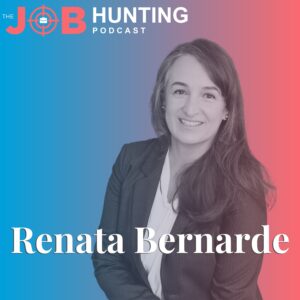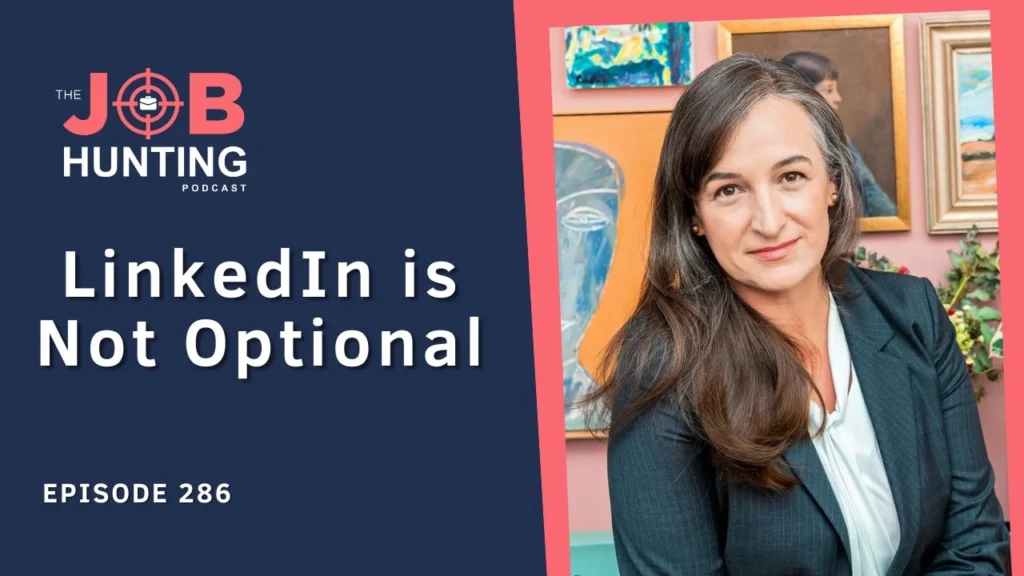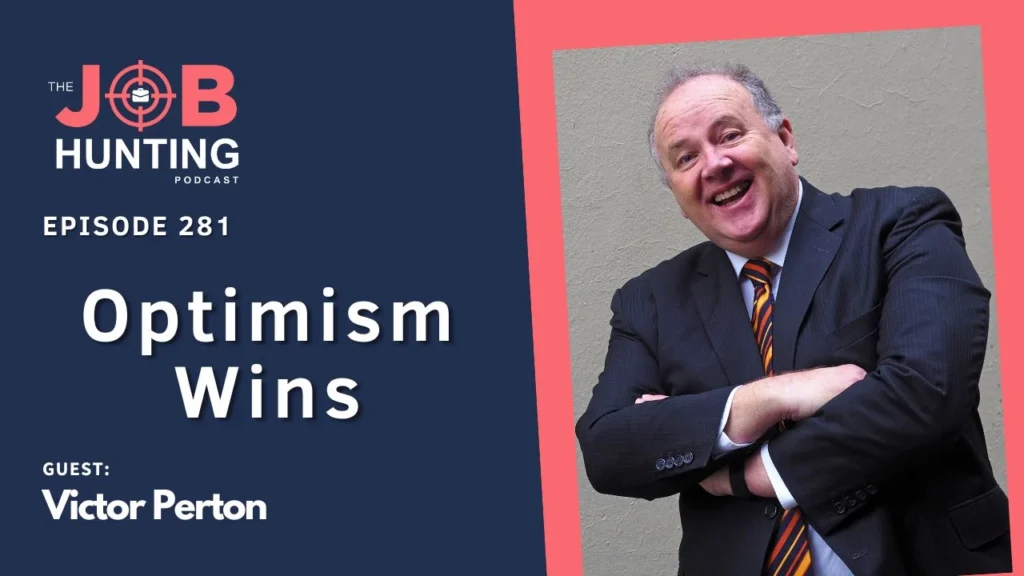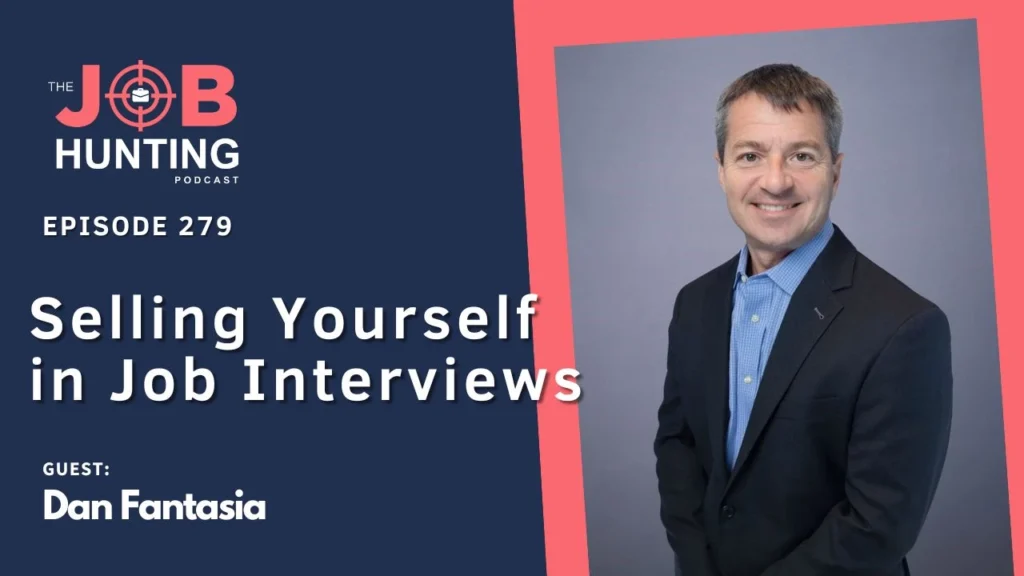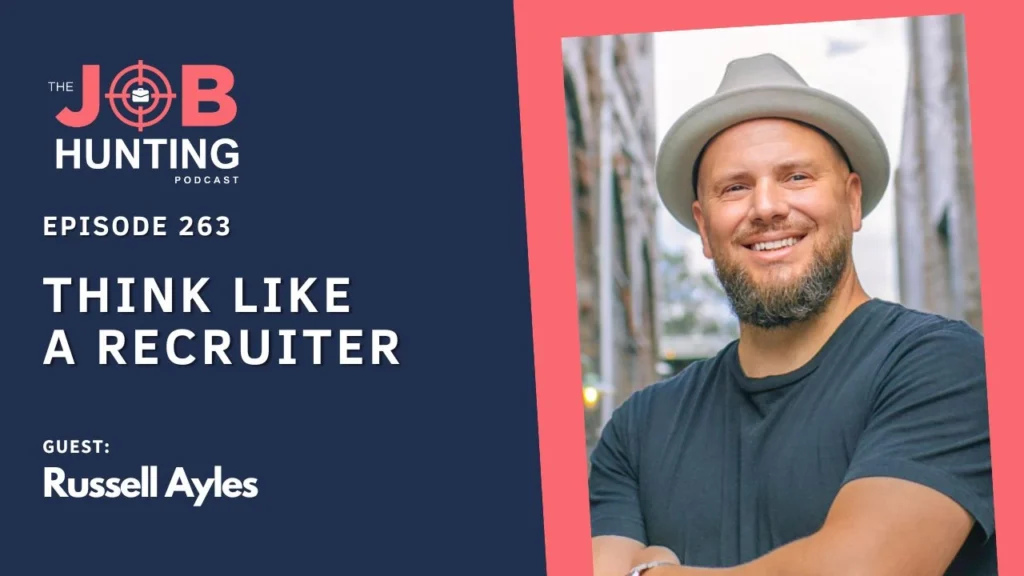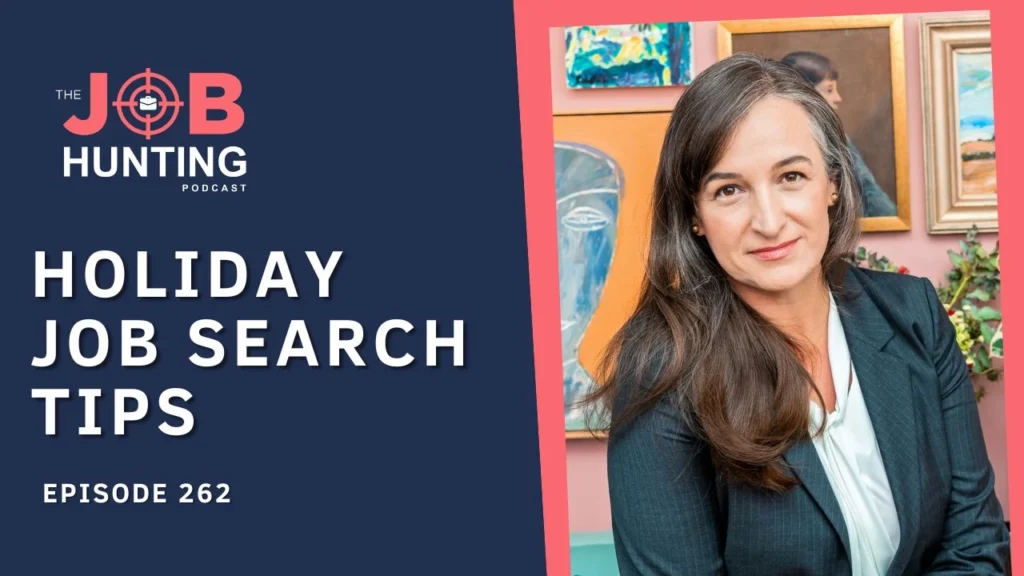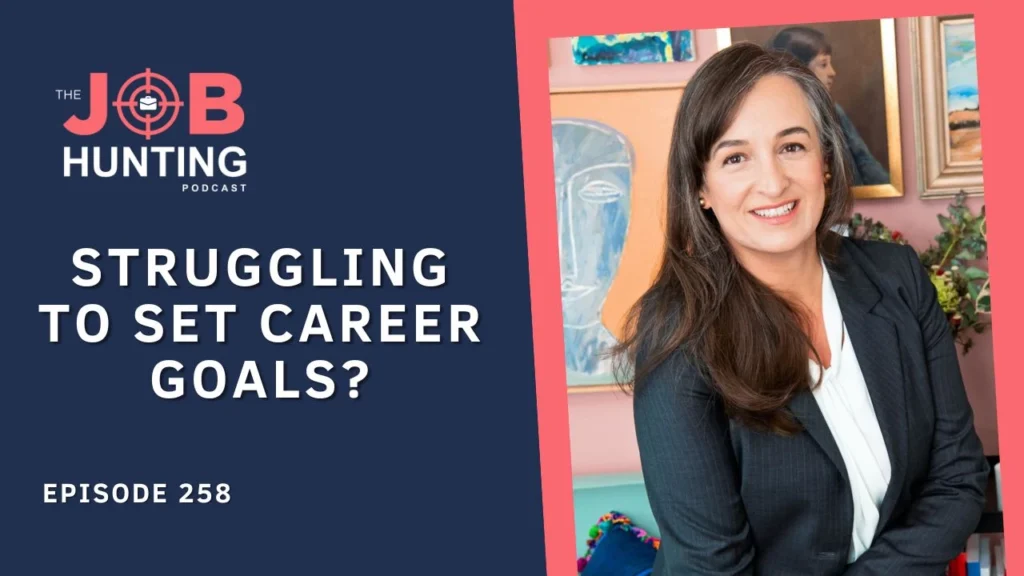Renata: Well, you saw the title of the podcast. So, you know, this one is about LinkedIn again. Do I talk about LinkedIn too much? I don’t know. I was thinking about this last night, and I can’t help myself. It’s an important aspect of job hunting, career advancement, and career stability to be part of LinkedIn. And I’m always asked about this. People come to me for coaching about this. I do my LinkedIn audits. So, of course, I’m a big fan, and Melbourne is yet again in lockdown. So all of the events and networking opportunities that we were hoping to do in the coming days are now canceled. That is the same for Sydney and many other cities around Australia and indeed around the world. So LinkedIn is our avenue. It’s our opportunity to catch up with others, find out what others are doing and let others know what we’re up to.
Renata: Have you updated your LinkedIn profile since you set it up or since you got your new job or a promotion in the last 12 months? Have you updated your LinkedIn profile, or indeed, have you posted anything of your own, not liked or commented on other people’s posts? If not, you may be missing out on leveraging from LinkedIn big time, and this is what we’re going to talk about today. In fact, I’m going to share with you my personal journey and evolution using LinkedIn, how I updated my profile over the past decade or so. And maybe you can learn from what I’ve learned and learned from my mistakes and from my successes on this platform. Over time, I have changed careers, changed jobs, and had many good results through LinkedIn. I believed LinkedIn had helped my career advancement big time.
Renata: I can’t do an exact correlation. LinkedIn update equals Renata got a job, but there are lots of coincidences. And you know what I say about coincidences, a lot of coincidences is a pattern and therefore we can make some assumptions about it. So today, as I said, we’re going to talk about my journey and evolution on LinkedIn regarding my presence and messaging and how I have updated my profile and activity over the years. We are going to talk about the results I got and how I believe LinkedIn has been instrumental in supporting my career advancement and my transition into my own business, and how I’ve been intentional and had a strategy in mind all along. I’m sharing my top three things that I think you should consider doing right now to elevate your executive presence on LinkedIn. So those are a few takeaways from me from listening to this podcast.
Renata: And I’m going to suggest to you how you can take further steps to guarantee that the time that you spend on LinkedIn pays off and brings you the connections, the network, invitations, and opportunities, in your career, in the short, medium and long-term. And when I say opportunities, I do mean job opportunities. We’re not wasting any time here or beating around the bush. I want the LinkedIn activity to bring big results and that investment of time and energy to pay off for you. But before we dig in and work out all of those different points that I had discussed right now with you, I want to invite you to subscribe to this podcast. If this is the important content to you, if you are a professional in the corporate sector, not for profit or government, then this is for you.
Renata: If you’re an executive, you could be, in a senior position, you can be a middle manager, it could be a project manager, an accountant, a marketing professional communications engineer. You are a white-collar worker. You are probably going to benefit from listening to this podcast. So why not subscribe, follow? If this is the sort of thing that you think add value to your career, please rank it. Five stars wherever you found it. Normally it’s iTunes like it and give us a review. It helps. And in addition to the podcast, I have a weekly newsletter that comes out every Tuesday morning, Australian time. So you may get it on Monday if you are overseas somewhere. And I have a lot of free resources for job hunters. So you can go to my website. It’s https://www.renatabernarde.com , and you can find the addresses and the links on the episode show notes. So just look for the show notes. Wherever you found this podcast, there will be lots of links and more information about me, my services, and the free tools and resources that I give all my listeners to help them out.
Renata: Okay. Now, how I updated my profile and activity over time in line with my career plans and the results I got, and how it helped my career advancement. So I really want to share my personal journey and evolution on LinkedIn with you because, with your career, LinkedIn profile and activity need to change and evolve and be elevated if you’re career advancing. And if you’re changing jobs in sectors as well, like resumes, LinkedIn profiles should never be a template that you copy out from somebody else that it doesn’t work that way. And when I do my LinkedIn audits, for example, I have to check where my client is from where they work, how their colleagues appear on LinkedIn, and what my client’s ultimate goal is in order to develop the best possible recommendations for that client. So that’s why the LinkedIn audit is so popular as a service.
Renata: And also because it’s a fairly inexpensive way to elevate your executive presence on LinkedIn. So go check it out if you’re interested. But I started on LinkedIn back in 2008. I’ve been on LinkedIn for a long, long time. And I found out I had to be on LinkedIn. I knew about the platform, but I found out I really needed to use it. And I use it professionally as well. When I went to the United States to visit eight universities as part of my job at Monash University, we looked at some international accreditation and student experience. I received a fellowship from Monash to study student experience, best practices overseas. And I went overseas, and they also asked me to look at international accreditation opportunities as well, which was very important for university rankings. But that’s by the, by you don’t need to know about that.
Renata: It’s too much information, but I remember going specially to Northwestern and UCLA, which is not a coincidence because those two MBAs are fairly great for marketing people. And, you know, I’m not surprised that the two people that I met, that would be in charge of the student experience for MBAs, told me about LinkedIn and how important it was for their students and for the promotion of their MBAs and how students had to have their profiles. And I was sold. So I came back to Monash, and I said, okay, our MBA students, in fact, all of our business students and all of our masters’ students should have a LinkedIn profile. Monash wasn’t that keen. And they asked me to set up an instead a unique and tailor-made platform for the Monash students. Now you’re laughing now, but I could understand the reluctance to go public and do something very online back then.
Renata: A lot of other businesses had similar concerns. I remember many consulting companies, especially Deloitte, were closed off and didn’t want to be on platforms like LinkedIn. Nobody really understood yet the value of it. So we created a platform for students to communicate with each other. Of course, it didn’t go, well, it didn’t, it didn’t go any further than maybe a couple of years. Because the idea is not for students to communicate with each other, it’s really. The students promote themselves to the world. And on the side, I continued to insist that my MBA and master’s students that I was saying in coaching that they should have profiles. In fact, if you go to my LinkedIn and you look at my recommendations, you will see that there is a time between 2008, 2010 that I got lots of reviews or recommendations from those amazing students who are now doing so well.
Renata: And so well, professionally, and I’m still in touch with many of them. And that was because we were all setting up our own LinkedIn profiles and using all the different tools and our recommendations were already a big thing back then. And, you know, we were playing it safe and being quite considerate of our employers. And I also remember that my boss and I decided to invite, I think it came from our office, the invitation for this guru from overseas to come and talk and convince the powers that be at the university, that adopting LinkedIn was a good thing. And I think after we got that message across, it became easier and easier for LinkedIn to be adopted by our academics, the professional staff, and the whole faculty. And, that’s, you know, how it is now, every university, every business has a big, big presence on LinkedIn these days.
Renata: In 2010, I received a phone call to apply for a role in a professional association. So the equivalent of CPA in the US is called chartered accountants in the UK and Australia. And it’s a professional association and a very strong, let’s say, lobby group working with the government. Before the international accounting standards, the chartered accountants in Australia set the accounting standards here. So they still have very strong thought leadership in influencing policy in that area and sectors. So I decided to move across to a professional association, really enjoyed that. And that’s why my LinkedIn became more and more a tool for work. And that’s how I reached out to members, reached out to potential members, and did a lot of my work using LinkedIn. It was completely okay for my employer to have my LinkedIn open all the time.
Renata: And it’s the nature of being in relationship management, a position that then became even more so when I took a national role at a think tank slash, industry association called Ceda here in Australia, the committee for the economic development of Australia and at Ceda with that national role, I never missed an opportunity to add people that I had just met at an event. I was traveling around Australia all the time. I used to spend full weeks, every month in Sydney and attending Ceda events and hosting Ceda events and everybody I met, I would try to find them on LinkedIn. Many of them are already there and connect with them, and that’s how my connections grew. So part of my work was, attending, networking, and connecting to build bridges and collaborations with these members, which were usually, you know, large corporations in Australia or federal and state departments and senior staffers of politicians and, and whatnot. So I would connect with them and keeping in touch with them through LinkedIn.
Renata: LinkedIn was also an avenue for us to continue to promote the Ceda white papers and research reports and events. So it was really a big part of my job to use my platform to help Ceda expand and reach out to more connections. I was completely okay with that because I love Ceda to this day. I still do. And same with the chartered accountants, which we did. It was early beginnings in terms of LinkedIn promotions, but we still did a lot back then as well. And, you know, when you are a hundred percent committed, aligned with your employer’s culture and the purpose, it’s so great to support them and help them. But I think that LinkedIn is also a platform for you as a professional to expand your opportunities. And you can balance that off so that some of it is exposure for your employer.
Renata: And some of it is exposure for you. And that’s a really important aspect of how I coach and what I discuss with clients. And it, again, depends on the sector and how comfortable they are in helping their employers and so on. So we, we discussed that, and we find a right recipe and balance, let’s say, to help them, leverage LinkedIn for themselves as well, or, or a hundred percent for themselves. If, you know, if, either their employer doesn’t have exposure on LinkedIn or they don’t feel comfortable, or their jobs are not really about marketing and communicating on LinkedIn, which mine, you know, where it was part of my, my, my job as a business development person and relationship management person. In 2014, at the end of that year, I took a CEO role with a not-for-profit organization, and things had to change a lot on my LinkedIn when I took that role.
Renata: there couldn’t be any conflict of interest. There couldn’t be an a, I needed to, I wasn’t at the top job. I was the top cat, and it was a top job for an organization that dealt directly with ministers and the prime minister and CEO. So I had to find a new tone and narrative and understand that as the CEO, I was one of my organization’s key advocates and champions. And in fact, if you are in that situation, it’s really important to have a good conversation with your senior execs or your board to identify who the right spokespeople are for your organization. I learned a lot from Ceda on what to do and what not to do in terms of identifying spokesperson for, advocacy, and communicating key messages. And I had that discussion very early on with my chairman.
Renata: I remember that clearly, and we had to identify who was, who in the zoo, but still, and I, and, and, and it was her, I felt it had to be her. And, and she agreed. And, but still, as the CEO, there’s a lot of responsibility. And I am still a spokesperson for the organization because of my role. And people will come to me for opinions, advice, and so on. So you have to really re redo your LinkedIn and redesign it, not just the LinkedIn, but really your whole, sort of professional day-to-day life changes. I had to step down from boards that I was in and advisory boards and committees that I was in, and so forth. So those are the sort of things you need to consider and do the big clean-up before starting the role.
Renata: And that’s why the first 90 days have has to start before you start the role. And, and we talk about that in the job hunting made simple program, and I discussed that a lot with my clients. I have done a podcast about the first 90 days. So, I can link below if you’re interested in learning a little bit more about that. When I left that role, it was the who. When was it 2016, end of 2016? I can’t remember. And I, there was a sense of freedom and liberation that was really important to me. So why am I gardening leave? And, and my, you know, time was up. I redid my LinkedIn again, not only because I had to look for work and I took time off, and I rested. I had a wonderful, supporting friend coach in Sue Zablud and two coaches to help me step in and then step out of that role in Andrea Hall brown and Denise Fleming, they’re well-known leadership and executive coaches in Australia.
Renata: So I had a lot of advice from them, but, you know, you take the advice, and then you make it your own. And I kick-started my job hunt with an article that I posted on LinkedIn. And I will link that article below because it went viral big time. It has been published in magazines in a couple of countries. It has like 40,000 views. It’s, it’s quite big. And it resonated with a lot of people. I made some great friends on LinkedIn, people who are now still following me since that day, the article, reach them and they, they read it, and people still come to me to say how important that article was. And it was really about stepping out of a big role and, and finding yourself again, and finding that, you know, you’re not lost at your not.
Renata: you haven’t lost your identity, your network, and your connections. I was really surprised with how many people reached out to me and offered me opportunities when I left that CEO role. I was in a great position of you, the, or even picking and choosing what I wanted to apply for and considering which I really, I was so afraid of stepping down from that role. And it was actually a very good thing that happened to me. And that freedom allowed me to write and express myself in my own way with my own voice, which you can’t do when you were in a senior executive position. And that freedom, I, I made the most of it until of course I got another job, and went back to Monash University and had a great time, working initially as kind of a chief of staff to a new deputy vice-chancellor, and then moving on to, for, you know, reasons of it being a startup portfolio and, sort of lots of sort of convoluted things that happened in the environment politics and how things were evolving.
Renata: I ended up probably biting way more than people thought I was supposed to or responsible for and, and had a very interesting time at Monash until I was made redundant at the end of 2018. And again, when you joined a very big bureaucratic bricks-and-mortar institution, you have to adapt your LinkedIn yet again to match what the expectations are for that organization. I was lucky that I had a boss in the vice-chancellor, Ken Slone, who is now going to be the vice-chancellor of a university in the UK. So he’s leaving Australia. He had a very big presence on all social media platforms, his Facebook, LinkedIn, and Twitter. He’s quite good at using social media himself. And I often cite him as an example to follow. And I think that it has helped his career.
Renata: So I felt that I could also continue to use LinkedIn, in a way that was unique and authentic to myself, but also, of course, having that big role within an organization managing, the portfolio alongside him made me sort of take stock and be more careful about what I was posting. And, of course, use my platform and the connections that I had to help build that portfolio. And, and you can do that through LinkedIn, for sure. As you know, I left the organization in 2018. It was a shock at the time, but I was actually. It was. I was ready to move on. I just didn’t know back then. I was quite surprised that I was made redundant. I was trying to, and I knew redundancy packages were going to happen. I just didn’t know I was going, but I saw some of my colleagues at my level leave quietly.
Renata: And then I, I realized that, yeah, this could happen to me too. And you, you know, you’re when you’re in that situation when you’re quite senior, you want to give him lots of options. And, you know, I had a great boss, as you know, and the HR manager, Bridget Connors, was fantastic. And they had given me a lot of freedom and opportunity to choose how I exited the organization. But I said, no, I want to exit. And let people know that I’m being made redundant. You know, a lot of people in senior roles don’t let others know that they have been made redundant. They made it make it look because it was their own choice, and that’s fine too, you know, no judgment. Of course, you have to think about what’s best for your career, what you will feel more comfortable with, but I was completely comfortable leaving.
Renata: And I didn’t want people to think that it was my choice because it wasn’t. And because I was really committed to my role and that portfolio, and I wanted it to succeed, despite all of the terrible federal politics, frankly, that we have in terms of research and development in Australia. And, you know, I really wanted that role to become bigger and that portfolio to succeed. So it wouldn’t make any sense for my personal branding if I had told people that it was my choice to leave. So I had to say, no, I was made redundant. And these are the reasons why X, Y, and Zed. And I was comfortable with that. I’m very thankful that they allowed me all of those opportunities. And, of course, it is a privilege. Not everybody has that opportunity to make a choice, right. And I left.
Renata: And a couple of weeks later, I was, I received a call from a friend who is a researcher, and she said, look, there’s this great CEO role for you. and it was a foundation. It was the size and the scope, and the network. That would be a very smooth transition for me, and my heart just sank. I didn’t want it, and I didn’t want it. And I didn’t know what to tell her because she was so keen for me to come in for a chat with the, with the powers that be, and for me to be considered for that role, she thought it was a good fit. There were other people that were also talking to me about the fit. In fact, the person who started that foundation and chaired it, originally, but still, I didn’t want it. And I decided to take a big leap of faith and bring forward my plan to have my own business.
Renata: Now, this plan had always been in the works, and I, it was always something that I wanted to do. I just didn’t think it would be in my forties. I thought it would be my fifties. I thought I had a few more executive jobs in me before I started my business. And, if I want to shut down shop now and go back to the corporate sector or the not-for-profit sector, I feel like I can do that. And it would be fine, but I just really love having my own business. And I started with consulting, and that went well up until the COVID times. And then, when the pandemic started in March 2020, I lost all my retainers, and they were interesting retainers. Still, they were very bricks and mortar, and they were, retainer’s that for priorities that have seen disappeared, you know, we had, green projects and, physical, incubator projects.
Renata: And, just being, you know, with, watermark, international looking, taking care of and running, physical events in their new office. I don’t even know what happened to that beautiful new office because I don’t think anybody’s back there yet, or if they are, they’re not full-time. So as you can see, all of the projects were, you know, very 2019 and, you know, transforming a very large organization, transforming their energy to green energy when nobody’s physically there, you know, now for the past year and a half, which just makes no sense. So those projects were canceled, and we haven’t picked them up. And in fact, I’m transitioning the Pantala business consulting brand to be an outplacement solution for businesses that want to restructure and lay off staff and want them to be very well taken care of.
Renata: So I want the programs that I’m running for you for individuals to also be available for corporations, companies, and businesses that want me to take care of their people. And I’d love to do that. So that’s something that I, I plan to do. More formally, I do that informally, and I have quite a few clients that have come to me through their employers, but I wanted to, go, you know, and challenge the traditional outplacement solutions, you know, your very near future. So if you have any ideas from me or would like to discuss this with me, look at the episode, show notes, find my email, and get in touch. I’d love to talk to you about outplacement solutions for organizations. And I had to change my LinkedIn again when 2018 came, right? So I did that. It had to become more of a LinkedIn for business, which is different.
Renata: And it’s one of the biggest mistakes people make when they start following me is that they start following me and doing what I do on LinkedIn, forgetting that I’m not an executive anymore. And I wouldn’t recommend my clients to do what I do. What I’m doing is I’m promoting my business, and that’s very different. And in fact, now we’re in 2021, and my business is doing so well. The career coaching, the group coaching, the programs that I have on-demand on my website, you know, the consultations, LinkedIn audit the reset your career workshop, which is on-demand. It’s all going so well that I have reinvested in branding. The podcast has a new brand. You may have seen it. My LinkedIn profile has changed. I opted out of working with mind tribes because I don’t feel like I have time to dedicate to working with that team anymore.
Renata: And they’re such a lovely group, and I’m still consulting and collaborating with them, but not formally on my LinkedIn. And I wanted my LinkedIn to be sharply about career transition, career advancement. And I had to redefine my LinkedIn profile yet again to align with where and where I’m going professionally. And I’m very, very happy with the results. So I did a very soft, low-key LinkedIn update recently, maybe three, four weeks ago. And again, I have seen that. It’s giving me more clients, probably more clients that I can take. And it’s all about how you position yourself, how easy it is for people to contact you and how, how easy it is for them to understand what you do. And I think that that’s something that I’ve been quite good at achieving over the years. I believe that LinkedIn has been instrumental in supporting my career advancement and my transitions at every point in time.
Renata: So, especially because, in 2010, in 2012, in 2014, and, in 2016, with the final role at Monash, these were not roles. I applied for them, but I was tapped on the shoulder, or I contacted people through LinkedIn to let them know that I was interested and the fact that they could then jump on LinkedIn and check my profile and check my activity and see that I would be a good fit for the opportunities I believe was instrumental for me to get the opportunities that I got. Right. So this is really about being intentional, being consistent, having a strategy in mind, updating your LinkedIn to match that strategy. And sometimes you need help to do that. So I’ve always had support and bounced back ideas with others before, taking a new leap and a new tipping point in my career. And always the messaging has to be good and sharp and clear so that connections had hunters, recruiters, colleagues, like-minded people that find you on LinkedIn, understand what you do.
Renata: And I get a lot of messages. So this week, for example, I got maybe two new clients from LinkedIn and four or five messages about people that want to connect with me. And they have bought, they have booked a time in my calendar, to do so. And I very strongly believe it’s because of the recent updates that I’ve done. Yeah. And you know, I think that I’d love to share with you the three things that I strongly believe you should do right now to elevate your executive presence on LinkedIn.
Renata: So these are the takeaways for you, your top banner on Linkedin, the one that has your photo and the background photo you, the heading, the education where you work, et cetera, contact details. That’s your blue-chip real estate investing, getting that bit, right? If anything, if you don’t have time if you don’t want to do it, at least that top heading needs to be spot on. And it’s important for you to understand what spot on is not do what Renard is doing, which is unfortunate. Something that many people that don’t, that are not clients of mine, but follow me. They tend to follow what I do and replicate. And I just wish that they could talk to me first. So, you have to adapt it to your country’s sector, industry professionals. And I do that all the time for my clients and my LinkedIn clients as well, my coaching clients and my LinkedIn clients. So get that top heading spot on. That’s important.
Renata: Don’t try to imitate others. It won’t work for you. Okay. So that’s my second tip, which was kind of blended with the first day. But I guess, you know, now that it’s important for you to not only find what fits your sector, industry, country, profession, and seniority level. And you’re, if you’re young or if you’re a more senior, but it’s also important to find your authentic voice and not to be afraid to use it. So do your research, find out the best practice for your sector and where you are when your career, and then find your voice. It’s really important not to try to imitate others because you’re just going to Blend in. And, you know, an example of that is when I land on a profile, and it’s all bloody jargon everywhere and keywords everywhere, even the sentences don’t make any sense, and they are long and difficult to read, and it’s just, you know, it’s boring really. So you have to really find your voice.
Renata: And your activity is, this is my third recommendation for you. Your activity is just, if not more important than your profile. Okay. So setting up your profile and then disappearing from LinkedIn will not give you any results whatsoever, minimal results possibly. Okay. But depending on your sector, it’s even more important than you to spend time on your activity and then your profile. Some clients have very minimal profiles. If they are in a, you know, governance role, risk management role, you know, sectors like banking and finance or government may require their profiles. Remember what I said about my CEO role? You know, my profile was minimal, but my activity was empowering and powerful, both for the organization I worked for but for my thought leadership and executive presence. So that’s where you show your knowledge. That’s where you show what level you operate. Let’s say you are a CFO and work for ASX top 100, you know, fortune 100 companies, and you have no presence on LinkedIn.
Renata: Nobody knows, you know, how you work or what your voice is, what you, you read and, you know, all of that, it would be important for you to share at least the articles that caught your attention that week. And like, you know, you, some of your peers and colleagues, like some of their posts and comment. So showing that activity on LinkedIn is where you make LinkedIn work for you, is where people will find you and say, oh, what’s that comment that Renata just made. I will, you know, come in and talk to her. I had a consultation this week with somebody I kid you not. I made a comment on somebody else’s post. And she decided to book a consultation with me. I was so like. I had never seen this happen. She had never listened to the podcast or anything. She actually didn’t know much about me at all, which is unusual.
Renata: Usually, when people book time with me or a LinkedIn audit or coaching, they already, I don’t even need to say much. They already know me so well. And they feel like they know me because they hear my voice on the podcast. But now she said, no, I, you, your answer was just so spot on. I found your profile, and I booked a consultation with you. And I’m like, okay, this is cool. So this can happen to you too. You know, if somebody is looking out for talent, they may find you through the activity.
Renata: Now, I want to suggest how you can take a step further to guarantee the time you spend on LinkedIn pays off and brings you the connections, the network, the invitations that will support your career in the short-medium. And long-term, you have to think long-term about these things, and you have to be consistent.
Renata: And remember that if you do a LinkedIn audit with me, which is my first suggestion, right, it’s cool. Like I have many clients and testimonials, which I’m yet to update on my website. So I hope to do that in the coming months that tell me that once they activate the recommendations that I make for the LinkedIns, their profile boosts, they get more views, they get more connections, they get more messages, and I get amazing feedback. And even screenshots of the insight, you know, when you see the statistics, of clients, showing me how much more exposure they’re having and how many more people are looking at their profiles, downloading their profile, their resumes. So they can see that if they’re job hunting, I have a lovely client. He’s a big fan of Excel spreadsheets. So he has sent me an Excel spreadsheet that shows clearly the before and after.
Renata: Before the LinkedIn audit, he was getting very little, no views, basically nobody was downloading his resume when he was applying for LinkedIn jobs. And then, all of a sudden, he got way more views. Everybody was downloading his resume. It was cool. Coaching is really important. I’m starting the group coaching again in August. So you may get a little message throughout this podcast. When I do that, the group coaching will be open, and you can try to do that with me for seven weeks starting and of August because the LinkedIn or the resume or the cover letter are instruments. Right. And what you need to do possibly is some work before you actually activate your LinkedIn to understand who you really are and what you really want to dig deeper into your value proposition as a professional because LinkedIn is just a mechanism to get that out.
Renata: It’s like a car. You want the car to take you places. You need to know where you want to go. I mean, you could just, you know, go off and into the world with your car and not know where you go. It’s quite romantic, but to get you to where you want to go, you need to have a strategy, a map, and a plan that will get you the results you want on LinkedIn, especially if you’re job hunting and very keen on career-advancing. Get started by at least downloading the LinkedIn audit checklist, which is one of my free tools that you will find on my website. And that LinkedIn audit is a sort of a shorter version of the LinkedIn audit checklist that I do with my clients. I don’t know if you know if you haven’t heard yet, what the LinkedIn audit is.
Renata: It’s basically a 60 minute, 40, 45 to 60-minute video of me looking at your LinkedIn profile and activity top to bottom. And then I’m sharing with you some of how to improve it based on the feedback you’ve given me when you booked. And again, as I said, when I say LinkedIn will support your career, I mean it will get you new job opportunities. And suppose you are like me, and you do that consistently over time. In that case, you will see that there are many coincidences about those opportunities coming when you have been very good at maintaining and using LinkedIn to your advantage. You will start to see why it’s so important.
Renata: So I hope that you have found these tips and my personal story important and that that has motivated you to do your LinkedIn profile, hopefully, this week. And let me know. I’d love to hear from you. You can get back to me by finding me on any of your social media channels. I’m on Instagram, Twitter, LinkedIn, of course, and Facebook. And in fact, this podcast has a private Facebook group. So if you want to become a member of that private group, you can find all the links on the episode, show notes, ciao for now. And I look forward to chatting with you again next time. Bye.

